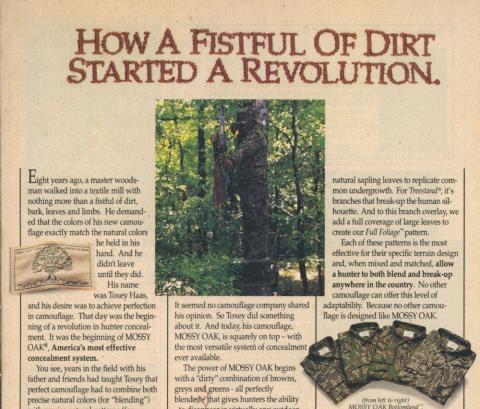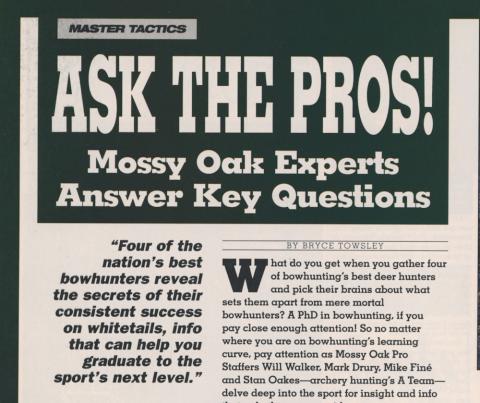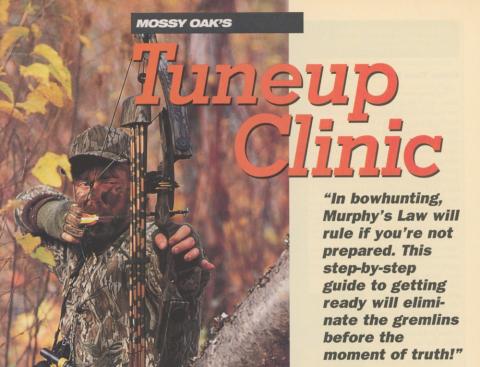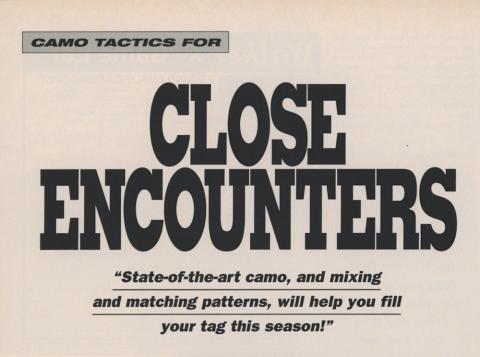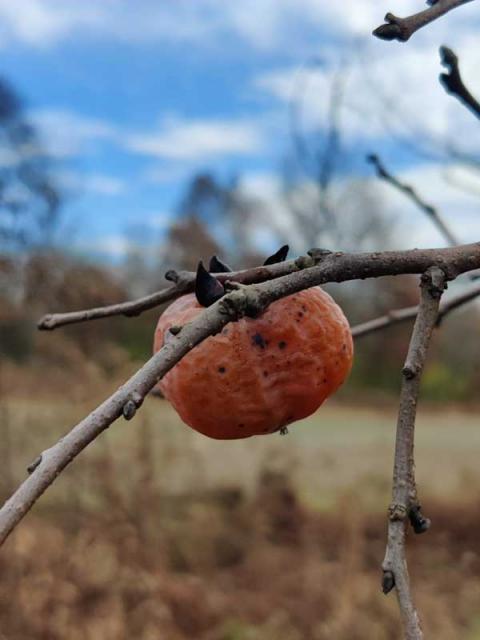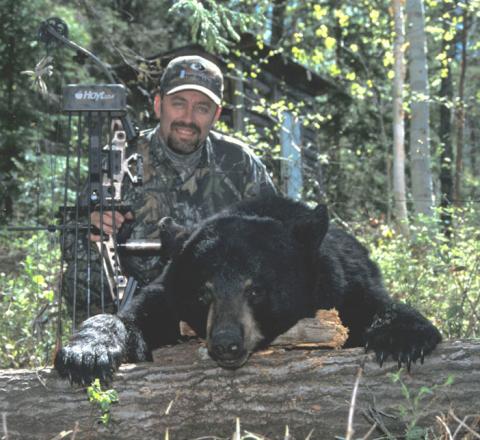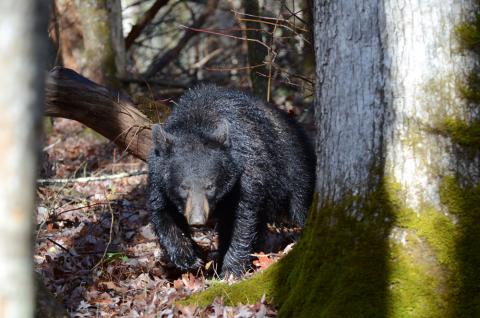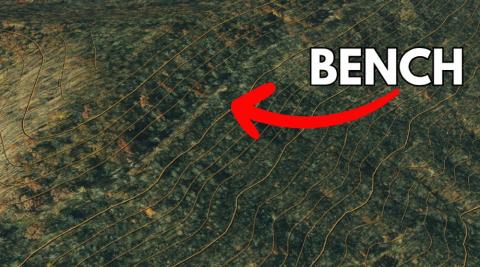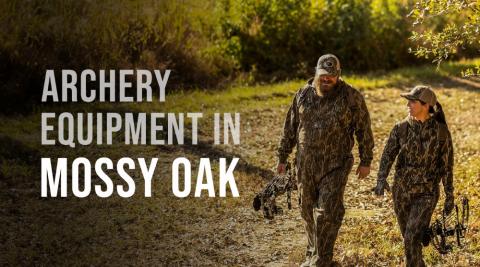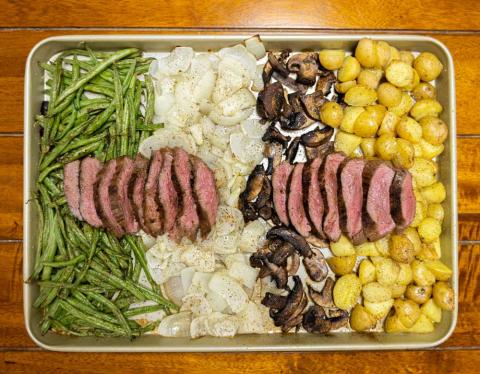Austin Delano with John Phillips | June 02, 2010
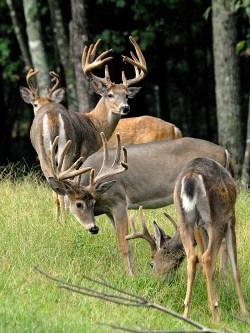 Now is the time to apply herbicide to a perennial clover plot, like a juicy field of Biologic Clover Plus. You’ll get much-more production out of your clover throughout the summer and into the fall by doing some maintenance right now. During May and June, clover fields often will have a good crop of grasses growing in them, especially if these clover fields have been planted with any type of cereal grain, like wheat, oats and rye. You need to go in and spray those clover fields with a grass herbicide like Select. The active chemical in Select is clethodim, a select-kill herbicide that’s only effective on plants in the grass family. This herbicide won’t affect any of your legumes or any type of broadleaf weed. Use about 8 ounces of Select per acre to clean up all the grasses in your clover field and get rid of the wheat and oats that compete with the clover for water and nutrition. If you let wheat and rye come back up in the spring, these plants will make seed heads that will dry-up and fall over. If these cereal grains are planted very thickly, they’ll actually shade-out your clover and create a canopy over the top of your clover.
Now is the time to apply herbicide to a perennial clover plot, like a juicy field of Biologic Clover Plus. You’ll get much-more production out of your clover throughout the summer and into the fall by doing some maintenance right now. During May and June, clover fields often will have a good crop of grasses growing in them, especially if these clover fields have been planted with any type of cereal grain, like wheat, oats and rye. You need to go in and spray those clover fields with a grass herbicide like Select. The active chemical in Select is clethodim, a select-kill herbicide that’s only effective on plants in the grass family. This herbicide won’t affect any of your legumes or any type of broadleaf weed. Use about 8 ounces of Select per acre to clean up all the grasses in your clover field and get rid of the wheat and oats that compete with the clover for water and nutrition. If you let wheat and rye come back up in the spring, these plants will make seed heads that will dry-up and fall over. If these cereal grains are planted very thickly, they’ll actually shade-out your clover and create a canopy over the top of your clover.
So, if you don’t spray and kill these weeds and cereal grains in the spring and early summer, you potentially may lose your clover field, especially that ground that’s notorious for growing Johnson grass. Johnson grass is a very-common weed found anywhere in the South and on up into the Midwest.
You also may encounter old fescue fields that can come back in your clover and choke it out. Spraying your clover fields with Select or any other type of grass-specific herbicide is some of the best money you can spend to improve habitat for wildlife and have lush clover fields this fall for deer season and during next spring for turkey season. One of the advantages of planting clover is if you maintain it, a good clover field can stay established for many years and produce heavy tonnages of highly-nutritious food for both deer and turkeys. So, the small amount of time and money spent to eradicate the weeds out of a clover field now will play big dividends during hunting season.
Mowing Clover Food Plots
Once you plant Biologic’s Clover Plus, the product will produce tons of highly-nutritious food for deer, turkey and other wildlife for years, if properly maintained. Spraying herbicides now in the spring and early summer will aid in eliminating the grasses that compete with the clover for food and water. But another strategy that will help increase the amount of clover your fields produce all year long is mowing throughout the summer. There’s one caution, however. Before you mow a clover field, walk around and through the clover field, and look for turkey nests. Make sure you don’t have any turkey nests in your clover fields before you start mowing.
If you see that the majority of your clover field has sort of a dried-up seed-head look to it, then you know the time to mow has arrived. A critical key to mowing is to know when to mow. You don’t want to mow your clover when it’s going through a stress period. If your region hasn’t had rain in 3-4 weeks, don’t mow your clover until after your area gets a rain. You won’t kill your clover by mowing it when it’s stressed, but more than likely you’ll put some thin spots in your field, if you mow the clover under drought conditions.
Biologic’s Clover Plus is a blend of New Zealand red and white clovers and two varieties of chicory. Chicory is a really-strong perennial like clover. Chicory puts out a big bolt (stem) during the spring, and you may see a few bluish/purple flowers on these stems. Deer seem to really like chicory when it’s in its flowering stage. In June when that bolt or stem starts to dry-up, that’s a really-good time to mow your Clover Plus fields. When you’re mowing clover or bush hogging it, you don’t want to cut it down like you do the grass in the front yard. You don’t want to mow the clover any shorter than 6 inches, even if your clover is 18-inches tall. You just want to make sure you’re knocking the tops off of all the clover seed heads. When you go in and mow after the seed heads have already turned brown and dried-up, you’re actually helping to re-seed your clover patches.
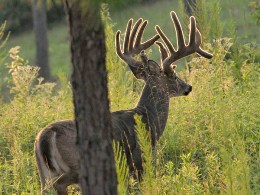 A fairly-good rule of thumb as it relates to mowing is to mow your clover at the end of the month during May, June and July. As long as your clover is thriving and growing, mowing encourages new growth and enables your green fields to produce more tonnage of highly-nutritious food for deer, turkey and other wildlife. In the South, I usually recommend not mowing the clover in August, because that’s the time of year when we tend to have the most drought conditions, and the clover seems to be the most stressed. You also may find these conditions present in some parts of the Midwest.
A fairly-good rule of thumb as it relates to mowing is to mow your clover at the end of the month during May, June and July. As long as your clover is thriving and growing, mowing encourages new growth and enables your green fields to produce more tonnage of highly-nutritious food for deer, turkey and other wildlife. In the South, I usually recommend not mowing the clover in August, because that’s the time of year when we tend to have the most drought conditions, and the clover seems to be the most stressed. You also may find these conditions present in some parts of the Midwest.
Mowing is also one of the best ways to keep broadleaf weeds out of your clover patches. Controlling broadleaf plants and weeds with herbicides can be difficult. You can spray for broadleaf control with a chemical called 2,4-DB in a field of legumes (including peas, beans, clovers and alfalfas). However, 2,4-DB can have a slight negative effect on chicory. I try not to encourage sportsmen and landowners to use 2,4-DB with Clover Plus, but it can tolerate this herbicide, if you’re having a severe problem with broadleaf weeds. That’s why I say that bush hogging or mowing is the best way to control broadleaf weeds in a Clover Plus green field. But if you’ve got a really-bad infestation of broadleaf weeds, you can use this herbicide to get rid of them.
Mineral Licks
The late spring and early summer are the times to put out BioRock mineral lick. Your bucks are putting-on antlers, and your does are usually carrying one to two fawns at this time of year. I recommend putting the BioRock on an old stump, because now’s the time that deer like to get minerals and salt for their overall health. The stump will help increase the consumption of the minerals and salts in BioRock. When the rains come, some of the minerals off the BioRock will wash down onto and be absorbed by the stump. We’ve found that deer like to dig around the stump and the old root system of the stump and chew on the wood that has absorbed the BioRock minerals and salt. By putting the BioRock on top of the stump, you often get twice the utilization of the minerals that you’ll get if you set the rock on the ground. Oftentimes, the deer will work the stump so heavily and the dirt around the stump that they’ll even dig the stump out of the ground. This technique causes the minerals in BioRock to last a long time. Old hardwood stumps seem to be the most-effective when used in conjunction with BioRock. I like to put BioRock on an old hardwood stump close to a bedding area.
To increase the effectiveness of BioRock, Biologic has created a new product called Rock Topper. This liquid that you pour over the top of the BioRock causes the deer to come to the rock even faster and to start licking it quicker than just putting-out BioRock itself. The combination of Rock Topper and BioRock and an old hardwood stump will produce a really-great site for deer to come to get minerals and salt during the late spring and throughout the summer and early fall.
I’m often asked, “How many BioRocks should I put out on my property?” I recommend one BioRock for every 80-100 acres. Although the heaviest usage by deer of BioRock usually occurs during the spring, we’ve learned that deer will use BioRock through the spring and summer and at all different times of the year. You’ll need to check with your local department of conservation. But in many states you can hunt near these BioRocks, since the rocks are a naturally-occurring element in nature. These rocks aren’t manmade. But because every state has different rules and regulations about what you can hunt over and what you can put out for deer, you need to check with your state department of conservation to learn: if you can legally hunt over BioRock during deer season; or if you can have BioRock close to a green field that you’ll be hunting during the fall. Another factor that will increase the utilization of BioRock is how close you place it to water, because there’s salt in the BioRock. Deer will often want to go get a drink of water and then come right back and start licking the BioRock.
Editor’s Note: Austin Delano is a territory manager for Biologic. He also manages the Biologic proving grounds in north Alabama, where seeds are tested before a decision is made as to what seeds should go into Mossy Oak Biologic seed blends. Delano is very knowledgeable about how to maximize the effectiveness and productivity of your green fields and wildlife openings. Although most hunters wait until September to start planting or maintaining their fall green fields, many of Delano’s suggestions are pertinent now.
For more information on what to plant and when to plant it, or habitat enhancements like BioRock and Rock Topper, visit www.plantbiologic.com.

















